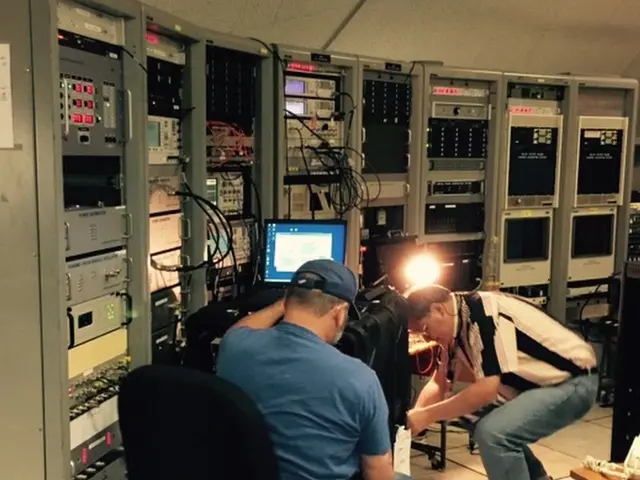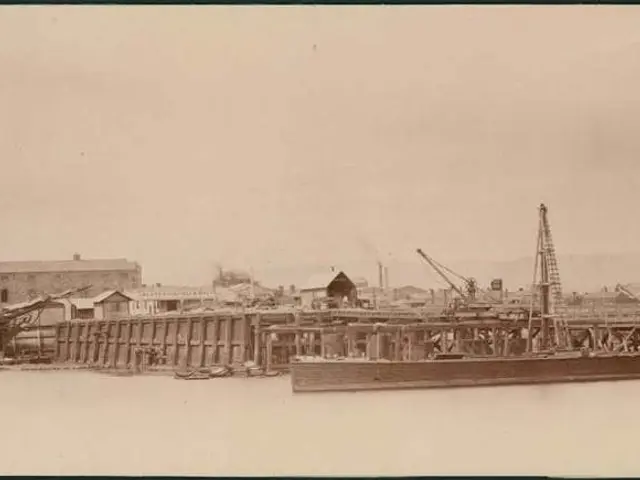Top 5 Largest Discovered Reserves of Valuable Mineral Troves
The Earth's crust harbors vital resources critical for numerous industries, encompassing building materials, automobiles, electronics, and jewelry. Among these essential elements are commodities like gold, copper, diamonds, and uranium, whose enormous deposits have shaped economies, fueled conflicts, and significantly impacted history. The quest for discovering the largest reserves, and the ownership of these resources, holds the potential to reshape the course of the world.
Determining the sheer scale of specific precious material deposits requires expertise and technical advancements. Owing to the inaccessibility of the Earth's crust, geologists employ sophisticated methods, such as assessing Earth's gravitational and magnetic fields, as well as sending seismic waves and electrical currents beneath the surface to obtain a better understanding of the subterranean landscape. Despite these intricate techniques, exact measurements remain elusive due to their inherent imprecision.
Over time, and with technological progress, the list of the Earth's largest precious material deposits has evolved. Some reserves, now recognized as record-breakers, were quantified recently, and others may soon be surpassed by future groundbreaking discoveries. Nonetheless, below we present the current largest known deposits of five essential materials.
Largest Known Deposits of Precious Materials
Gold Deposits
- Nevada Gold Mines (USA) This colossal gold mine complex, operated by a joint venture between Barrick (68.5%) and Newmont (31.5%), yielded approximately 2.7 million ounces in 2024. Its discovery and expansion entailed extensive drilling and modern exploration techniques, purportedly confirming substantial reserves and grades.
- Grasberg (Indonesia) Grasberg boasts some of the world's largest gold and copper reserves. Encompassing both metals, the deposit represents a rich polymetallic source. Its discovery and growth illustrate the evolution of exploration methods, from ancient mining techniques to advanced geological and geochemical methods.
- Golden Eye (Canada) Golden Eye, located in the Chibougamau district, is an emerging high-grade gold and copper resource. Data from historical production, combined with recent drilling that resulted in high-grade gold intercepts (up to 60.8g/t AuEq), has bolstered the site's significance.
Copper Deposits
- Olympic Dam (Australia) Ranked among the world’s largest copper deposits, Olympic Dam also boasts substantial uranium, gold (over 25 million ounces), and silver reserves. Discovered in 1975 by Western Mining Corporation, the site showcases a classic example of an iron oxide-copper-gold (IOCG) deposit, requiring intensive drilling under 350 meters of cover rock and extensive metallurgical testing.
- Filo del Sol (Chile/Argentina) Straddling the Chilean-Argentinian border, the joint Filo del Sol project between Lundin and BHP represents a major copper deposit following initial resource estimates. Verification of its size and grade has been achieved through drilling and geological modeling.
- Star Project (Location unspecified, possibly USA or Canada) As of 2025, the Star Copper project is undergoing drill exploration with the intention of expanding an existing copper discovery through drilling and geophysical techniques.
Uranium and Other Precious Materials
- Olympic Dam (Australia) In addition to copper and gold, Olympic Dam claims the world's largest known uranium resource (about 1 million tonnes). The deposit's polymetallic nature necessitates intricate verification and processing technologies.
The discovery and verification of these substantial reserves have been facilitated by systematic geological exploration involving mapping, geophysics, and drilling. Subsequent detailed resource modeling and metallurgical testing have further substantiated the viability and value of these deposits.
Chronicles of exploration and discovery can guide us as we continue to unearth the Earth's hidden treasures and harness their potential for a sustainable future.
- The sophisticated methods employed by geologists, such as assessing Earth's gravitational and magnetic fields, sending seismic waves, and electrical currents under the surface, are vital in determining the scale of precious material deposits, like gold and copper, in the Earth's crust.
- Among the largest known deposits of precious materials is the Olympic Dam in Australia, which holds the world's largest known uranium resource, in addition to substantial copper, gold, and silver reserves.
- In the realm of environmental science, understanding and managing these precious material deposits, along with the associated energy resources and finance implications, plays a crucial role in creating a sustainable future for the planet's industries and economy.







